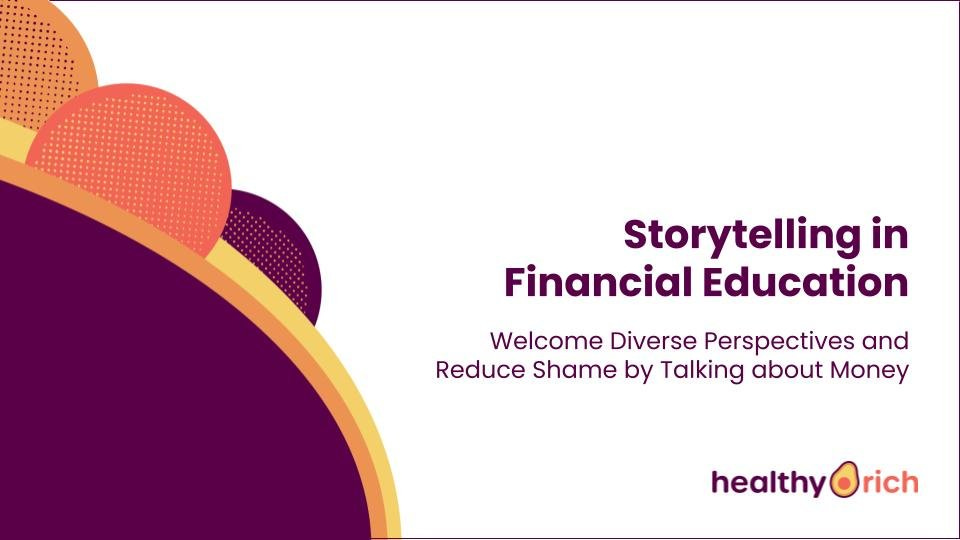There's power in our stories
Welcome diverse perspectives and reduce shame by talking about money in your financial education program
I started Healthy Rich as a blog in 2021 with one simple intention: Make space for stories that illuminate the diversity of our relationships with money.
After six years in personal finance media, I'd become frustrated by the shallow coverage of financial issues across the board, and the lack of nuance and care in how we were talking about money. Readers were turning to us for answers to real-life quandaries, and we were offering up one-size-fits-all maxims almost no one could apply in reality.
So I struck out on my own to start a new kind of conversation about money. And I started with stories.
Despite my experience and expertise, I knew I alone couldn't speak to the vast array of experiences and relationships with money. I needed more voices.
The first thing I did to launch the Healthy Rich blog was invite women to share their stories about work and money. I was totally unknown, and the question I posed wasn't one people are often asked to ponder; I wasn't sure whether there would be any interest.
More than 200 women from around the world sent in essays sharing their stories.
I read every essay, was moved to tears and laughter... and knew I'd found the new conversation I'd been looking for.
I know the nuts and bolts are important in financial education. And I love pulling back the curtain on our financial systems and demystifying subjects many people are convinced they'll never understand (after one consultation, someone told me simply, "I no longer feel stupid when I think about this."). But money is so much more than that.
Surveys have shown over and over that the most likely place people will seek financial advice is from friends and family. And how do we offer advice to friends and family when we're not experts? We share our experiences.
Incorporating storytelling into financial education programs helps participants learn in a safe environment, and it encourages them to break down the shame and stigma we attach to money moves that don't fit into that one-size-fits-all picture traditional financial literacy loves to paint.
In response to questions from financial educators, I created a guide to help you get a new kind of conversation about money going in your own community.
Become a free subscriber to get a copy of my guide, Storytelling in Financial Education.
This guide for financial educators, coaches and advisors addresses this vital element missing from most conversations about money: stories.
Stories are the way humans understand the world. They’re how we understand diversity and nuance and develop empathy for the people around us. Research shows that storytelling enhances the learning experience.
Yet, personal stories are woefully absent when we talk about money.
Budget culture boils money down to a set of “rules” and ignores the nuance and personal connections needed to address the full breadth of our relationships with money.
This guide will help you quickly and easily introduce storytelling into any financial education program.
The guide includes three ready-made activities for your students or clients.
Plus you’ll learn:
Why storytelling matters in personal finance.
Why storytelling is missing in financial education.
Tips to solicit stories from clients without exacerbating shame.
The guide is free, and you’re welcome to use the activities in your practice however you wish!
Become a free subscriber to get a copy of the guide.
Thanks for your work and for your dedication to the future of financial education.
Cheers,
Dana
P.S. Since publishing that first batch of essays from women, we've run series on Black Finance, Queer Money and Disability & Money, and we've only scratched the surface. As a subscriber, you’ll never miss our latest stories.




